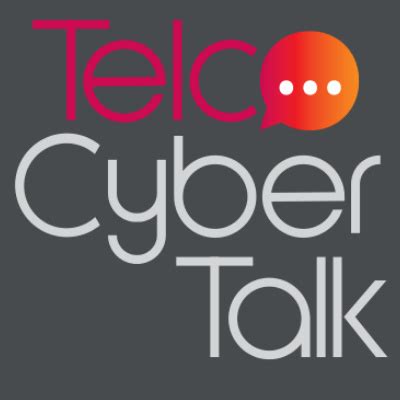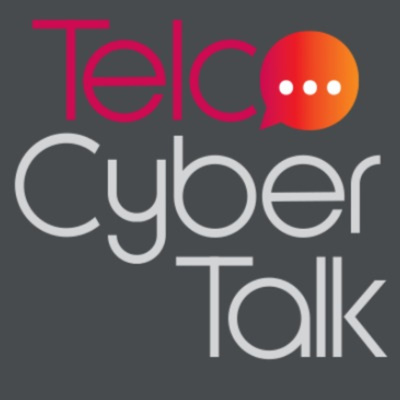The telecom industry is on the brink of a transformative era with the advent of 5G technology. As the backbone of modern communication, telecom is set to revolutionize connectivity by enhancing network speed, reliability, and enabling innovations like IoT, smart cities, and autonomous vehicles. This article explores the current state of the telecom industry, delves into the profound impact of 5G, and discusses the challenges and solutions in its deployment. Through case studies and future predictions, we’ll examine how telecom companies are spearheading this shift, ultimately shaping a future where consumers and businesses thrive in a hyper-connected world.
hotelfiler.com will provide a detailed exploration of this topic.
1. Overview of the Current Telecom Industry
The telecom industry is a cornerstone of global connectivity, facilitating the exchange of information and powering the digital economy. Recent years have witnessed remarkable growth in the industry, driven by breakthroughs in mobile technology, cloud computing, and digital communication platforms. The emergence of 4G LTE has dramatically increased mobile internet access, laying the groundwork for a truly interconnected world. To meet the escalating demand for data, telecom operators have made substantial investments in infrastructure, catering to a growing number of internet users and the surge in smart devices.
The telecom industry, while facing significant challenges, stands at a pivotal point in its evolution. Traditional revenue streams, like voice and text services, have declined due to the widespread adoption of over-the-top (OTT) services such as WhatsApp and Skype. The industry also faces pressure to manage and optimize vast amounts of data traffic while maintaining security and compliance with regulatory standards. Embracing new technologies, like 5G, is essential for the industry to remain relevant and drive future growth as the world moves towards a more interconnected future.

2. Introduction to 5G Technology
5G technology represents the next major step forward in wireless communication, promising to fundamentally alter the way we connect and interact with the world. Unlike previous generations, 5G is designed to deliver ultra-fast data speeds, minimal latency, and the ability to connect millions of devices simultaneously. This new generation of mobile networks is not simply an upgrade, but rather a complete transformation in network structure and management. It introduces cutting-edge technologies such as millimeter waves, massive MIMO, and network slicing, which collectively enable unprecedented levels of performance and efficiency.
5G’s impact goes beyond faster download speeds, promising to ignite a new era of innovation across industries. It will power real-time communication in smart cities, cater to the intricate demands of autonomous vehicles and the Internet of Things (IoT), and serve as the foundation for future digital infrastructure. With its global rollout, 5G will play a crucial role in shaping the future of connectivity and communication.

3. Impact of 5G on Network Speed and Reliability
5G technology is transforming mobile connectivity by dramatically enhancing network speed and reliability. Offering data transfer rates up to 100 times faster than 4G, 5G enables near-instantaneous downloads and real-time communication, even for data-intensive applications. This remarkable speed is crucial for the successful implementation of emerging technologies like virtual reality (VR), augmented reality (AR), and ultra-high-definition video streaming, which demand significant bandwidth to operate effectively.
5G’s benefits extend beyond mere speed, significantly bolstering network reliability. The technology is engineered to sustain consistent connections, even amidst the congestion of densely populated areas, a longstanding challenge for previous network generations. With ultra-low latency, measured in milliseconds, 5G facilitates real-time interactions. This capability is crucial for applications like remote surgery, autonomous vehicles, and industrial automation, where even the slightest delay could have critical consequences.
Furthermore, 5G’s capacity to handle a large number of connected devices concurrently, without sacrificing performance, fulfills the escalating need for connectivity in smart homes, businesses, and public areas. This scalability guarantees that as the quantity of IoT devices expands, networks will maintain their strength and efficiency. In conclusion, 5G’s influence on network speed and dependability is a fundamental aspect of its revolutionary potential, paving the way for the next wave of digital experiences and services.

4. Innovations Enabled by 5G (IoT, Smart Cities, Autonomous Vehicles)
5G technology is ushering in a new era of innovation across diverse sectors, propelling advancements previously deemed impossible. One of the most significant areas impacted is the Internet of Things (IoT), where 5G’s high-speed, low-latency capabilities enable seamless communication between a vast network of devices. This connectivity empowers everything from smart home devices to industrial IoT applications, facilitating real-time data exchange and automation on an unprecedented scale.
Smart cities stand to gain significantly from 5G technology. The enhanced connectivity provided by 5G allows for the implementation of intelligent infrastructure, encompassing areas like traffic management systems, energy-efficient buildings, and interconnected public services. These advancements translate into a more comfortable urban environment, reduced congestion, and optimized resource allocation.
Autonomous vehicles depend heavily on 5G for optimal performance. The technology’s low latency is essential for enabling the real-time decision-making processes vital to self-driving cars. 5G facilitates communication between vehicles, infrastructure, and the cloud, enhancing safety and efficiency on roads. As 5G deployment progresses, these advancements will become increasingly integrated into daily life, ushering in a future where connectivity fuels everything from homes to entire cities.
5. Challenges and Solutions in 5G Deployment
Realizing the full potential of 5G technology presents a series of challenges that must be overcome. A primary obstacle is the substantial investment required for infrastructure. Unlike earlier generations, 5G relies on a dense network of small cells rather than traditional cell towers, demanding extensive upgrades and new installations. This necessitates not only significant financial expenditures but also logistical complexities, particularly in densely populated urban areas and remote regions.
Another challenge is the availability of spectrum. 5G requires access to a broader range of frequency bands, including higher-frequency millimeter waves, which offer faster speeds but have limited range and penetration. Ensuring that these frequencies are available and can be efficiently utilized requires careful planning and international cooperation.
Security is also a critical concern. The increased connectivity and data transfer rates associated with 5G raise the stakes for cybersecurity. Protecting networks from potential breaches and ensuring data privacy is paramount, requiring robust security protocols and continuous monitoring.
To overcome these challenges, collaboration between governments, telecom companies, and technology providers is essential. Innovative solutions such as network slicing, which allows operators to create virtual networks tailored to specific needs, and advancements in antenna technology, can help optimize the deployment process. By addressing these challenges, the path to widespread 5G adoption becomes clearer, paving the way for a more connected future.
6. Regulatory and Policy Considerations
The deployment of 5G technology requires careful consideration of regulatory and policy frameworks to ensure successful implementation. Governments and regulatory bodies play a crucial role in allocating the necessary spectrum, setting standards, and establishing guidelines to promote fair competition and innovation. One key consideration is spectrum management. The high-frequency bands needed for 5G must be allocated efficiently, and governments must ensure that there is enough available spectrum to support widespread deployment while preventing interference with existing services.
Privacy and security regulations are also paramount. As 5G enables more data-intensive applications, safeguarding user data and protecting against cyber threats become increasingly important. Policymakers need to implement strict cybersecurity measures and data protection laws to build trust among consumers and businesses.
International cooperation is essential to address the global nature of 5G networks. Harmonizing standards across borders can help prevent fragmentation and facilitate the seamless operation of 5G services worldwide. Additionally, regulations must balance fostering innovation with ensuring public safety, addressing concerns about potential health impacts, and managing the environmental footprint of 5G infrastructure.
7. Case Studies of Early 5G Implementations
Early 5G implementations provide valuable insights into the technology’s potential and the challenges associated with its rollout. One notable example is South Korea, which became one of the first countries to launch nationwide 5G services in 2019. The deployment has been marked by significant advancements in mobile connectivity, with applications ranging from enhanced mobile broadband to real-time data analytics in smart cities. South Korea’s 5G network supports high-speed data transfer and low latency, enabling innovations in sectors such as healthcare and entertainment, and setting a benchmark for global 5G adoption.
In the United States, cities like Los Angeles and Dallas have seen the early benefits of 5G through partnerships with major telecom providers. These cities have implemented 5G networks to enhance public safety through smart infrastructure, such as connected traffic lights and surveillance systems, and to support the growth of autonomous vehicle testing.
China has also made substantial progress with 5G, using the technology to drive economic growth and technological leadership. Cities like Shenzhen have integrated 5G into their public transport systems and smart grids, demonstrating the technology’s capability to improve urban management and energy efficiency.
These case studies highlight the diverse applications of 5G and offer a glimpse into its transformative potential across different regions and industries.
9. Role of Telecom Companies in Advancing 5G
Telecom companies are pivotal in advancing 5G technology, driving its deployment and integration into everyday life. Their role extends beyond simply rolling out the infrastructure; they are central to shaping the ecosystem that will support 5G’s growth and potential. Telecom operators are investing heavily in upgrading their networks to accommodate the high-speed, low-latency requirements of 5G. This includes deploying a dense network of small cells, enhancing data centers, and adopting advanced technologies like massive MIMO and beamforming.
Moreover, telecom companies are forging strategic partnerships with technology providers and industry leaders to develop and implement innovative 5G applications. These collaborations are crucial for creating a robust 5G ecosystem that can support diverse use cases, from smart cities to autonomous vehicles.
Telecom operators are also involved in shaping regulatory and policy frameworks to ensure a conducive environment for 5G deployment. By working with governments and regulatory bodies, they help address spectrum allocation, security concerns, and other critical issues.
Additionally, telecom companies are focusing on customer experience and service differentiation. They are developing new business models and solutions that leverage 5G capabilities, offering enhanced services and applications that meet the evolving needs of consumers and businesses. Through these efforts, telecom companies are driving the advancement of 5G and its transformative impact on the connected world.
10. Conclusion: Long-term Implications for Consumers and Businesses
The long-term implications of 5G technology for consumers and businesses are profound and far-reaching. For consumers, 5G promises a significant enhancement in digital experiences. With faster data speeds, ultra-low latency, and increased network reliability, users will enjoy smoother streaming, quicker downloads, and more responsive applications. The proliferation of smart devices and IoT technologies will further enrich daily life, enabling more personalized and efficient interactions with technology.
Businesses, on the other hand, stand to gain immense benefits from 5G’s transformative capabilities. The technology will drive innovation in various sectors, from manufacturing and logistics to healthcare and entertainment. Companies can leverage 5G to optimize operations, enhance automation, and implement real-time data analytics. This will lead to increased efficiency, reduced costs, and new business opportunities.
Moreover, the advent of 5G will spur economic growth by creating new markets and driving the development of advanced applications and services. The integration of 5G with emerging technologies like AI and edge computing will unlock new possibilities, fostering a more connected and intelligent ecosystem.
In summary, 5G is set to reshape the digital landscape, offering enhanced connectivity and new opportunities for consumers and businesses alike. Its widespread adoption will be a catalyst for innovation, driving forward a future where technology is seamlessly integrated into every aspect of life and work.
hotelfiler.com
